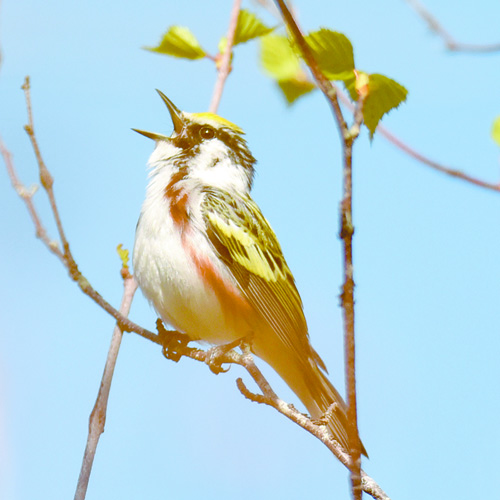Earth Notes: Black flies? Mosquitos? Yes, please!

By Mary Jewett
Guest Columnist
We all know the classic rhyme, April showers bring May flowers. May also brings an influx of annoying biting insects. For many (most?) people, this leads to feelings ranging from mild annoyance to fully formed rage against the bloodsuckers. Most of us have seen the classic comics naming the mosquito as Maine’s state bird, with the terrifying image of a giant mosquito, dripping blood from its needle-like proboscis.
As with anything, there are those who feel much differently about the season. Enter me, the birder, the birdwatcher, the one who relished the first black fly getting stuck in my eye. For without the bugs, our feathered friends would not be here. We have many species who remain in Maine in the winter (see article from January about the Christmas Bird Count) but even they would not survive and thrive without bugs. Fruit and seeds will only get you so far; you need protein if you’re going to raise healthy young ‘uns.
For some, spring starts when they see the first robin, shouting out “the robins are back!” Being an insufferable know-it-all, I have to point out that not all robins migrate, so those robins maybe have been here the whole time. Same thing with bluebirds I’m afraid. The true harbinger of spring for me is the Eastern phoebe. Not only are they one of the first insect eating birds back, they also build their nests in, occasionally inconvenient, places at people’s homes. Whether it is under the porch, in your light fixture, or right above your door (like the one outside my office) they get right to work in April, many taking advantage of the extra time to raise multiple broods over the summer.
For the past month, I have been leading bird walks at the Bob Dunning Bridge (at Pondicherry Park) here in Bridgton. Each week, we have seen more and more species show up. A few of the migratory birds we glimpsed in the last two weeks include Baltimore orioles, yellow-rumped warblers, American redstarts, chestnut-sided warblers, yellow warblers, Cape May warblers, and scarlet tanagers. This week, we observed catbirds and common grackles already feeding young in their nests.
This incredible influx of avian life creates a sense of vitality that only spring can inspire. And black flies, mosquitos, midges, and a host of other insects, make it possible.
All lightheartedness aside, I cannot in good conscience expound on the virtues of biting insects without acknowledging the very real threat they face in other parts of the world. We are incredibly privileged to live (or visit) in a place where the vast majority of biting bugs are relatively harmless. As annoying, and sometimes painful, they can be, mosquitos pose little risk in our colder climate.
According to the World Health Organization, about 725,000 people die each year from mosquito borne illnesses. Malaria accounts for 600,000 of those deaths, most occurring in Africa. Fortunately, this is a largely preventable disease, but the vaccine is still unavailable in many communities.
In conclusion, whether we celebrate or despise black flies in our eyes, we must always be grateful that we live in this beautiful place. Wear long sleeves, check for ticks, and don’t eat any old mushroom you see in the forest, and you should get through a walk in the Maine woods unscathed.
Mary Jewett is director of Education and Invasives Prevention at Lakes Environmental Association.

